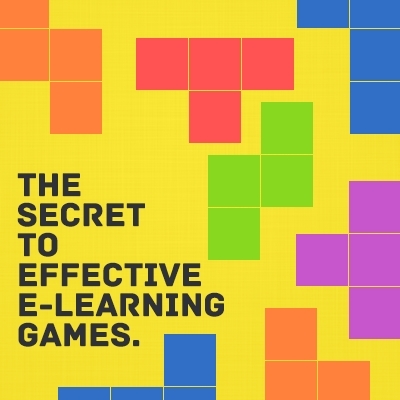Serious games go a long way toward creating a unique, effective learning experience. Learning expert Clark Quinn reminds us in his book, Engaging Learning that “We are not, cannot be, about designing content. A fundamental perspective I want you to take away is that we are designing experiences.”As Quinn says, “You have to start thinking about putting the learners into a context where they have to make decisions, understand why those decisions are important, want to make those decisions, and know that there are consequences of those decisions.” In short, you want to create an environment where the learning has real-world impact. This is key to an effective e-Learning game.
Designing Effective e-Learning Games
An effective game doesn’t have to be heavily produced and full of animations, but it does need to be heavily designed from an instructional design perspective. During the storyboarding process, consider where people will go wrong, what the consequences for an incorrect choice should be and how to gradually increase the difficulty throughout the game. Let the learner make choices, but don’t let the correct choices be too obvious. Every wrong choice’s consequence should give just enough of a hint about what the learner should have done. This gives your learner a nudge to try it again because now he or she thinks success is within reach. With a believable storyline and outcomes that are closely linked to your learner’s business needs, you can show why it’s important that your learner succeeds in the e-Learning game.
Take a look at these 5 essential elements found in effective e-Learning games
- Clear Goals and Objectives
The learner must be able to clearly see and understand the goal he or she is trying to achieve within the game. This is where you tie the learning to relevant business tasks or objectives. For more tips on creating clear goals and objectives, check out this blog: 4 Tips for Creating Effective e-Learning Objectives. - Thematic Coherence
Every game is in a genre (or blends several), and the action within the game must be consistent to the theme or model world we develop. Out of place elements or themes will distract your learner and lessen your game’s credibility. - Balanced Challenge
We’ve all played games that are too hard at the start, so we just give up and never go back. Your e-Learning game needs to achieve a balance between too easy and too difficult at the start. As the learner improves, gradually increase the level of challenge. - Choices of Action
There needs to be (at least a perception of) a variety of choices the player can make at any time. Here are some game types that offer different action choices: adventure games, building games, reality testing games, role-play games, puzzles, and sport games. - Direct Interaction and Action Coupling
The learner should be able to directly impact where the game goes. These actions should cause reactions that are represented back to the player as consequences in the game world. Never just say, “That’s wrong. Try again.” Make consequences for incorrect choices as realistic as possible. For tips on creating realistic experiences, take a look at this blog: Building Scenario-Based e-Learning Courses.
Keep these key ideas in mind as you create your next e-Learning game, and you’ll be amazed at how engaged your learners are! For more great tips on incorporating games, check out this blog: 5 Best Practices for Incorporating Games Into Training Courses.You can easily creative an interactive game using the actions and variables in Lectora e-Learning software. Get a free 30-day trial, and try it yourself today

